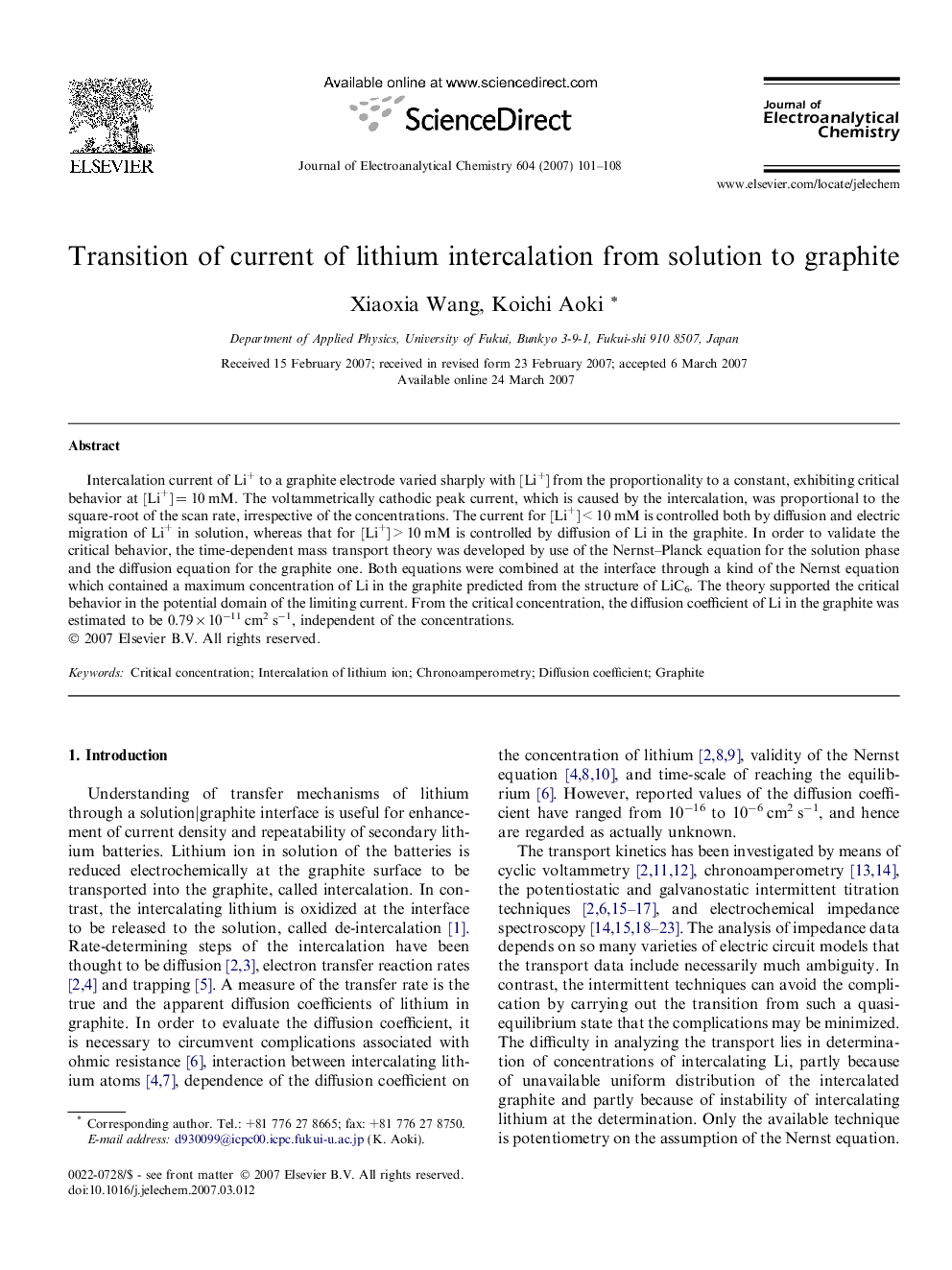| Article ID | Journal | Published Year | Pages | File Type |
|---|---|---|---|---|
| 220839 | Journal of Electroanalytical Chemistry | 2007 | 8 Pages |
Intercalation current of Li+ to a graphite electrode varied sharply with [Li+] from the proportionality to a constant, exhibiting critical behavior at [Li+] = 10 mM. The voltammetrically cathodic peak current, which is caused by the intercalation, was proportional to the square-root of the scan rate, irrespective of the concentrations. The current for [Li+] < 10 mM is controlled both by diffusion and electric migration of Li+ in solution, whereas that for [Li+] > 10 mM is controlled by diffusion of Li in the graphite. In order to validate the critical behavior, the time-dependent mass transport theory was developed by use of the Nernst–Planck equation for the solution phase and the diffusion equation for the graphite one. Both equations were combined at the interface through a kind of the Nernst equation which contained a maximum concentration of Li in the graphite predicted from the structure of LiC6. The theory supported the critical behavior in the potential domain of the limiting current. From the critical concentration, the diffusion coefficient of Li in the graphite was estimated to be 0.79 × 10−11 cm2 s−1, independent of the concentrations.
